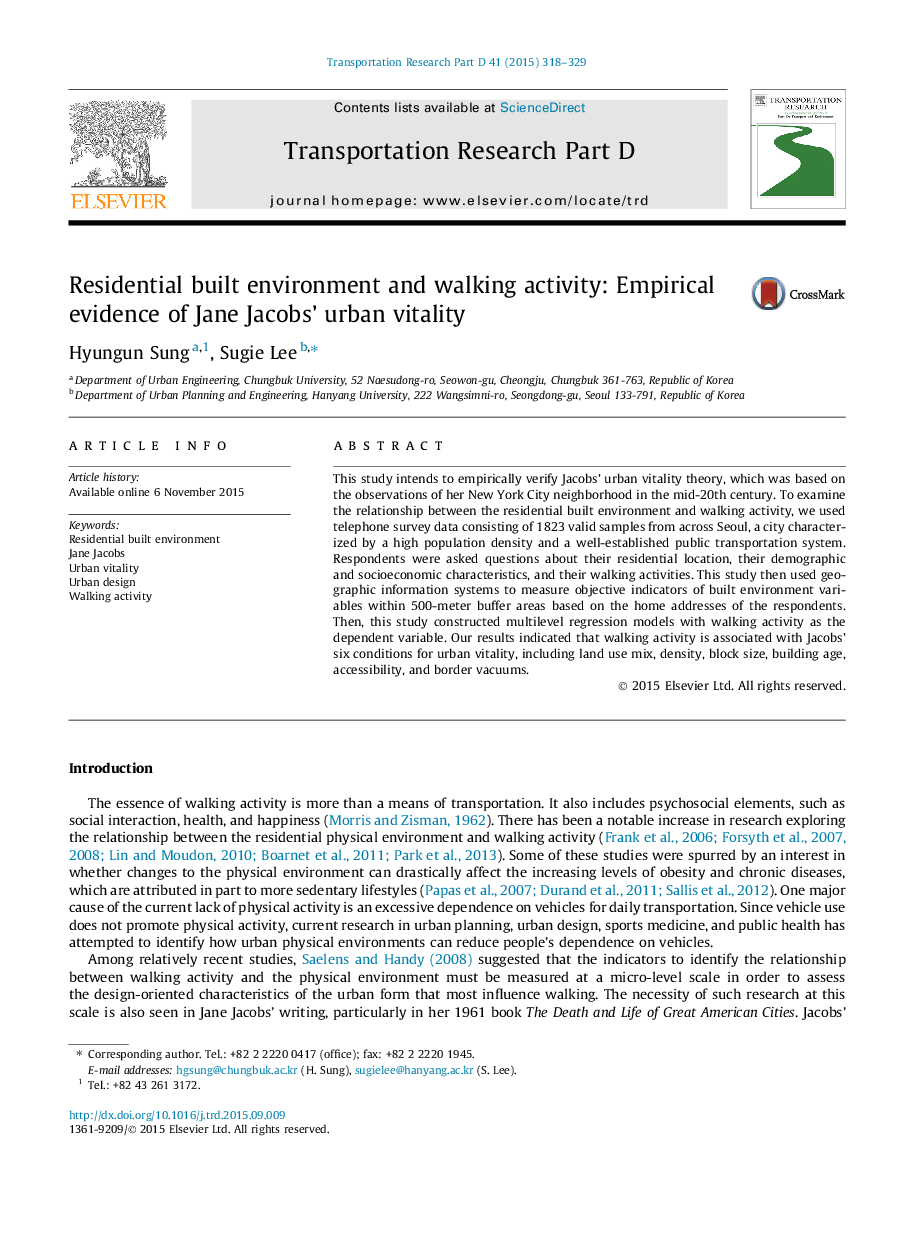| Article ID | Journal | Published Year | Pages | File Type |
|---|---|---|---|---|
| 7500104 | Transportation Research Part D: Transport and Environment | 2015 | 12 Pages |
Abstract
This study intends to empirically verify Jacobs' urban vitality theory, which was based on the observations of her New York City neighborhood in the mid-20th century. To examine the relationship between the residential built environment and walking activity, we used telephone survey data consisting of 1823 valid samples from across Seoul, a city characterized by a high population density and a well-established public transportation system. Respondents were asked questions about their residential location, their demographic and socioeconomic characteristics, and their walking activities. This study then used geographic information systems to measure objective indicators of built environment variables within 500-meter buffer areas based on the home addresses of the respondents. Then, this study constructed multilevel regression models with walking activity as the dependent variable. Our results indicated that walking activity is associated with Jacobs' six conditions for urban vitality, including land use mix, density, block size, building age, accessibility, and border vacuums.
Related Topics
Life Sciences
Environmental Science
Environmental Science (General)
Authors
Hyungun Sung, Sugie Lee,
